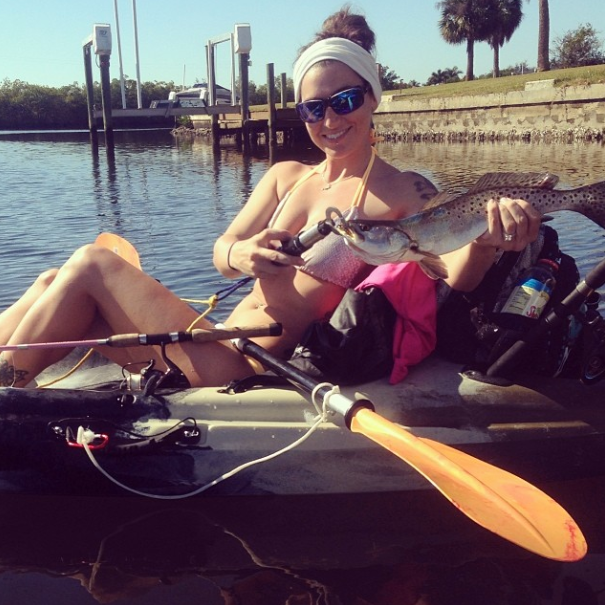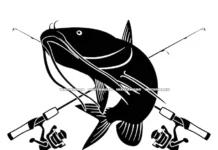http://www.b3fishing.com/2011/01/08/introducing-the-anchor-man/
The Legend of Neil Taylor, “Anchor Man”

Is it completely mindless? You drop your anchor, end of story? I’ve been described as “A deep-water-anchoring-kind-of-guy” but let’s get back to that. Let’s consider the following question: What is anchoring? Getting your watercraft secured to the seafloor is a great definition. For any craft users or the kayak anglers, utilizing anchors does have some straightforward basics but it also has a bunch of “insider” tips. All in all, it is very basic, ask anyone: You get an anchor down to hold your boat in place.
To leave it at that, headaches are coming for those who think it’s that simple. As a Kayak Fishing guide, the applications are even more important. Unless you are a contortionist, it is definitely more comfortable to fish from a kayak “casting straight off the bow”, facing the fish. Multiple concepts involved here, the angler needs so figure out what the dominant force will be: It will be the tidal flow (on lighter wind days) but usually it will be the wind direction. The experienced angler will know their tidal flow for their area and then based on the wind direction they will know the “approach” with the “anchoring angle” in mind. The Anchor Man will get back to that.
Consider the following with anchoring a kayak, or even to a certain extent other watercraft:
Safety considerations:
Anchoring for “safety” is one item that’s well worth the preparation. Your regular length of anchor rope may be inadequate if conditions are dubious. In heavy weather, should you not be able to get off the water or to a “safety spot” (sheltered) and you must remain in open water: You need to be able to deploy a lot more anchor rope than you would normally need. A tip for basic anchoring: Have three feet of rope for every foot of the water depth.
Other perils in anchoring, “the hung anchor”:
For anglers utilizing an anchor trolley system and a cleat, controlling the amount of line deployed while anchoring: Take a knife along to be able to quickly cut a hung up anchor rope. In this anchoring system, anglers are running the anchor rope through the trolley ring. The peril is, if the anchor hangs up on some kind of structure (Rocks, a wreck or anything else immovable) in a ripping current, you will be in a serious trouble in a hurry. Having a sharp knife immediately available can detach the angler from the rope/anchor/the Earth.
Consider a system that I recommend, using a clip to attach the anchor rope to the trolley ring. In the same situation, no knife is necessary to detach the craft from the anchor rope.
Tip: A float attached to your anchor rope gives you the opportunity to retrieve the anchor.
When not to anchor at all?
Make it a rule, for your “light” wind days, stay off anchor until you hook a fish or you know you’re into an area where you know the fish are. There are prime areas and “prospecting” areas. Staying off the anchor, if you have a “target area” and based on the breeze and the current you can discern your drift direction, not anchoring will “take you to opportunities” rather than letting them come to you. Your prime areas show all the evidence of having active fish. That may be a time to “anchor up”.
Not on anchor: But ready to deploy
You can either learn from your mistakes, or listen to Anchor Man: The best anglers, success is in the preparation. At the start of an outing, rigging your kayak: Get your anchor out, have the rope unwound and “clipped off and ready to deploy”. Why is this so important? “If” you have set up your anchor system before you make a cast, after the hookset, you can (with one hand) deploy an anchor down and stop the movement of your craft. This will prevent a fish pulling you through the rest of the school allowing you to catch multiple fish from the same school instead of being pulled through the rest of the fish.
Deploying the anchor
This one is worth mentioning because it is a common error. You have found the fish: Achieved the element of surprise by sneaking up to them. Like fingernails on a chalkboard, a metal anchor banging on a deck or on the cockpit or side of a plastic boat, the element of surprise may be gone. I call these people “anchor bangers.”
Anchor Man tips: Have your anchor prepped at the launch with all the rope unwound and the anchor placed where it can be easily picked up and “set” in the water. Not “throw” or “toss” the anchor. A rule-of-thumb: You should be so quiet, your fishing buddy should have to ask you if you’ve put your anchor down.
Positioning and The Anchor Trolley
The Anchor Trolley is a feature on the fishing kayak that is only second to “rod holder” as a feature that makes the kayak fishing experience so much more enjoyable. The concept is simple. Based on the current and wind, the positioning of the anchor at various angles off the watercraft will cause it to face different directions. The system is a combination of pad eyes, a pulley, utility rope, a stainless steel or plastic ring and a short length of bungee (for “automatic tension adjustments”). In a properly tensioned system, the main rope slides easily because of the pulley.
The reason the anchor trolley is important can be lost on the people who fish a different way: In a kayak, you are in a seated position. The ability to manipulate the direction the kayak is facing makes for more accurate casting and comfortable fishing. Add in some additional benefits, the smart angler will approach their targets from upwind, “putting the wind at your back” for longer casts.
Mostly pretty basic decisions; anchor trolley systems on both side of a kayak are a good idea. Shifting winds and currents or other variables may cause the angler to want to “switch sides” with the anchor’s attachment to their boat to be able to face the right direction.
As previously mentioned, you may want to consider a clip for attaching your anchor rope to your craft instead of running a rope through your trolley ring. Mentioned previously, putting a float on your anchor line up by the clip can allow you to detach from the anchor and retrieve it later (For example, a big fish is taking a lot of line and getting off anchor will allow the craft to move toward the direction the fish is going).
Choices in anchors
This is all about “the conventional anchor” but there are other choices, items that are situation dependent. Next time, building on the wisdom of The Anchor Man: Boats with rudders, drift chutes and stakeout poles. For now, your introduction to the Anchor Man is based on the folding anchor, a great choice for the kayak angler. While the other options can be very useful, I believe that there is a need for the conventional type anchor. 
One reason already mentioned: Safety. Other reasons the folding claw anchor should always be on your watercraft: The water depth and also the composition of the sea floor. If it’s mud or a mix of sand and mud, the stake out poles will work even in medium depths. Over hard packed sand, crushed shell or oyster bottom the folding anchor is a better option.
Choices in anchors 2
It there is any substantial current or wind where you’re fishing your 1.5-pound anchor won’t hold. The 3-pound is an all purpose choice. The 1.5 works fine if you’re always deploying it over something it can grip. If wind and current are going in the same direction and you’re over sand, even the 3-pound may not always hold.
“Everyone just relax, all right? Believe me, if there’s one thing Neil Taylor knows, it’s anchoring.” Anchors away!
Neil Taylor
www.strikethreekayakfishing.com
(Cell) 727-692-6345
LivelyBaits@aol.com
- The Neil Blog… - July 26, 2023
- The Catfish - July 26, 2023
- update - July 22, 2023











